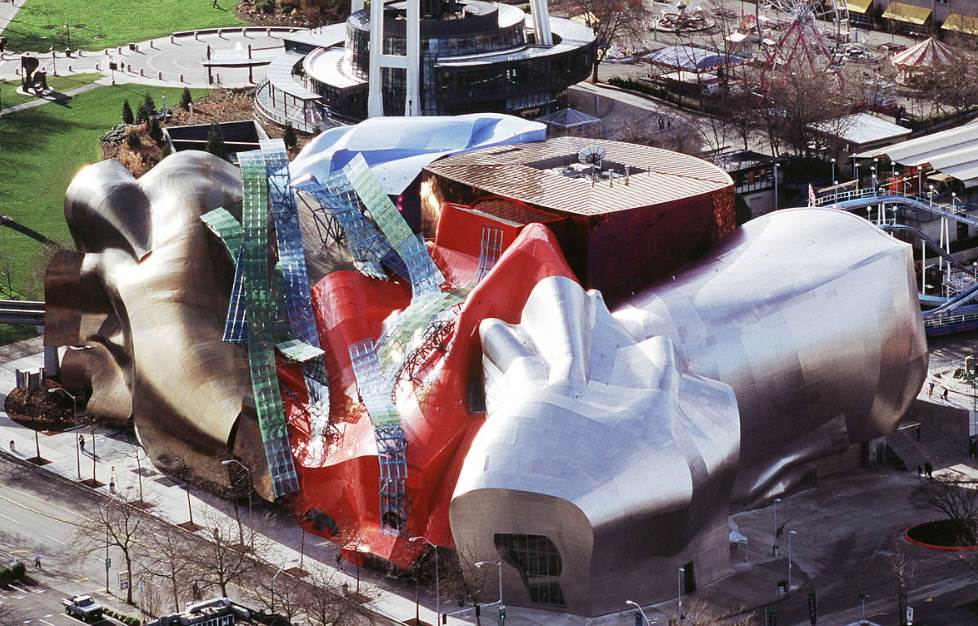A fascinating movement of postmodern architecture has the main goal of producing a completely asymmetrical building.
The name of the movement doesn’t reveal what it’s about because there it doesn’t refer to deconstruction, but rather fragmentation of several parts of the structure.
Deconstructivism first emerged in the 1980s when the buildings of the Parc de la Villette in Paris incorporated the style.
The movement was highlighted in all its aspects during a pivotal exhibition called “1988 Deconstructivist Architecture” at the MoMA in New York City.
Perhaps the most fascinating fact about Deconstructivism is that most architects who seemingly embrace this movement firmly reject it. That’s remarkable because there is no clear negative connotation with the world.
Let’s take a closer look at some of the most famous Deconstructivist buildings in the world, structures that aim to produce an overall sense of control in a chaotic design.
1. Walt Disney Concert Hall – Los Angeles, United States
The Walt Disney Concert Hall is not only one of the prime examples of Deconstructivist architecture, but it’s also one of the most fascinating buildings in Los Angeles, California. It was designed by Canadian-born American architect Frank Gehry, a man who has designed more than one famous Deconstructivist building in his career.
The planning of the building started in 1987 when Lilian Disney donated $50 million to build a large music venue in LA. It was eventually completed between 1999 and 2003 and has become an absolute icon of the city. The amazing acoustics inside the 2,265-seat venue is a nice bonus to this architectural spectacle.
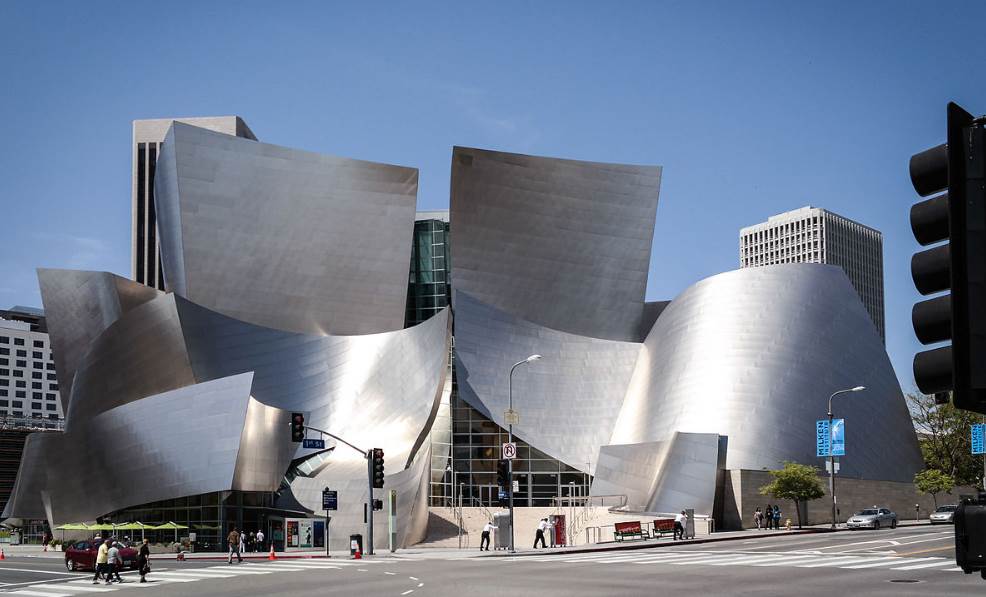
2. Seattle Central Library – Seattle, United States
Seattle Central Library is the main building of the Seattle Public Library system. It’s an incredible glass and steel structure that stands 56.9 meters (185 feet) tall and is located in the heart of downtown Seattle. It can easily be described as one of the most stunning buildings in Washington State.
The building was designed by Dutch architect Rem Koolhaas in collaboration with American architect Joshua Prince-Ramus. The structure was completed between 2002 and 2004 for $165.9 million. The modern structure replaced several predecessors in this location, including a Beaux-Arts building sponsored by Andrew Carnegie.
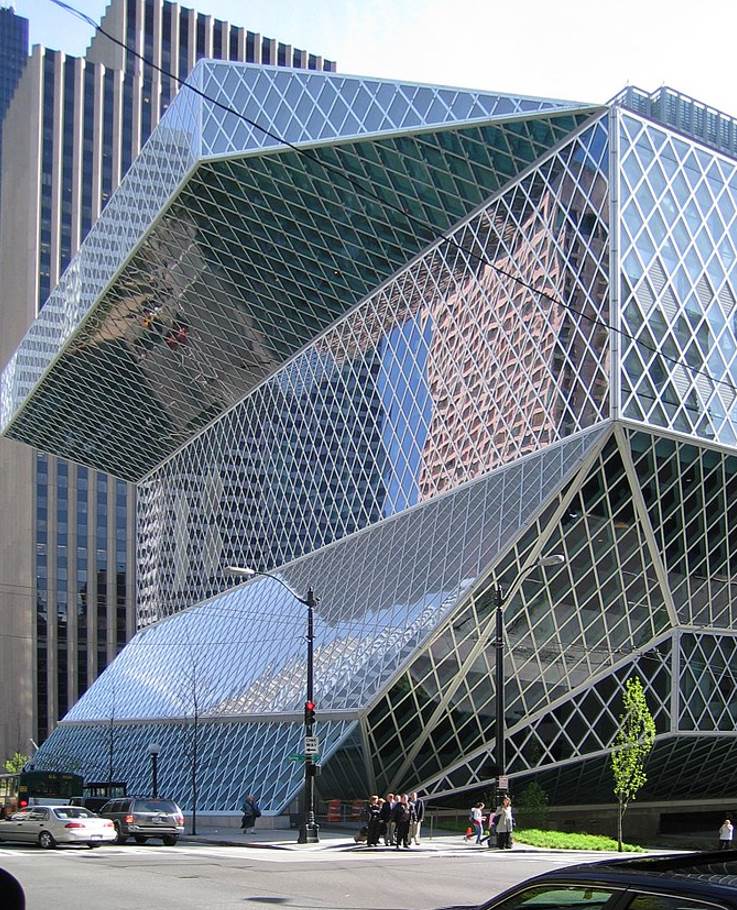
3. Dancing House – Prague, Czech Republic
The Dancing House is the nickname given to a remarkable building in Prague, the capital city of the Czech Republic in Central Europe. The official name of the structure is the Nationale-Nederlanden building, a reference to a large insurance and asset management company in the Netherlands.
The building was constructed between 1992 and 1996 and is located just south of the historical heart of Prague. It’s another building designed by Frank Gehry who referred to the building as “Fred and Ginger.” This is a reference to famous dancers Fred Astaire and Ginger Rogers who the building represents.

4. 8 Spruce Street – New York City, United States
8 Spruce Street is an incredible skyscraper in the financial district of New York City. Thie stunning NYC skyscraper is the epitome of deconstructivist architecture when it comes to highrise buildings. With a height of 265 meters (870 feet), it was the tallest residential skyscraper in the world upon completion in 2011.
The tower is completely clad in stainless steel, an element that gives it its amazing appearance. The core of the building was constructed using reinforced concrete. The building was immensely praised when it was completed and is considered to be one of the greatest additions to the New York skyline for many decades.

5. CCTV Headquarters – Beijing, China
The CCTV Headquarters is a remarkable building in Beijing that serves as the headquarters of China Central Television (CCTV). It has a peculiar shape which makes it appear a lot shorter than it really is. Yes, this is a skyscraper that stands 234 meters (768 feet) tall which makes it one of the tallest buildings in the city.
The structure was designed by Dutch architect Rem Koolhaas and it took a while before it was completed between 2004 and 2012. A fire during the Lantern Festival day of 2009 resulted in a serious delay in the project. The architect said that it’s a building that no Chinese architect could conceive and that no European company could construct.
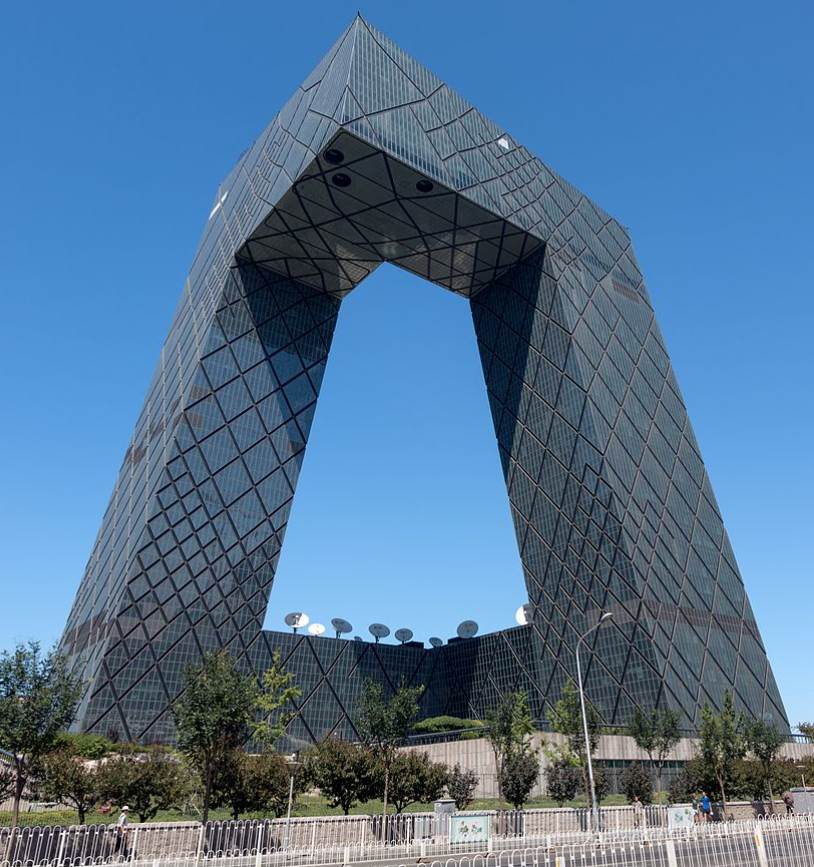
6. Guggenheim Museum – Bilbao, Spain
The Guggenheim Museum in Bilbao is one of the absolute architectural highlights in all of Spain. This astonishing building was designed by Frank Gehry and was completed in 1997. The opening ceremony was conducted by King Juan Carlos I of Spain. Yes, this was a pretty big event.
The design was praised all around the world and the building has been described as “a pivotal moment in the history of architectural.” The location on the banks of the Nervion River that flows through the city definitely helped to accentuate the amazing architecture of this structure, especially at night.

7. Imperial War Museum North – Manchester, United Kingdom
The Imperial War Museum North is one of the five branches of Imperial War Museums in Britain. It’s housed inside a stunning building in Manchester and is situated in the Metropolitan Borough of Trafford in Greater Manchester in North West England
The museum opened its doors in 2002 and was designed by Polish-American architect Daniel Libeskind. It’s considered to be a prime example of Deconstructivist architecture and one of the architect’s ultimate masterpieces. The air shard of the structure provides amazing views of the Manchester Metropolitan area.

8. Lou Ruvo Center for Brain Health – Las Vegas, United States
The Lou Ruvo Center for Brain Health is officially known as the Cleveland Clinic Lou Ruvo Center for Brain Health and is one of the most stunning buildings in Las Vegas, Nevada. You can see that Frank Gehry had a great time designing its building as it bears all the characteristicsthat made him one of the most renowned architects in the world.
Although it’s a relatively small building compared to some of his other projects, it still cost an estimated $70-$100 million to construct between 2007 and 2010. The building was commissioned by Larry Ruvo, the son of Lou Ruvo who suffered from Alzheimer’s disease.

9. Musée des Confluences – Lyon, France
The Musée des Confluences is a science center and anthropology museum in the French city of Lyon. It was constructed in a remarkable location on the southern tip of the Presqu’île, just near the confluence of the Rhône and the Saône rivers in the heart of the city.
The design of the building has been described as a “floating crystal cloud of stainless steel and glass.” The initial budget of the project was €153 million but it eventually ended up costing nearly €300 million. The museum opened in 2014 and offers a total of 22,000 square meters (238,000 square feet) of exhibition space.
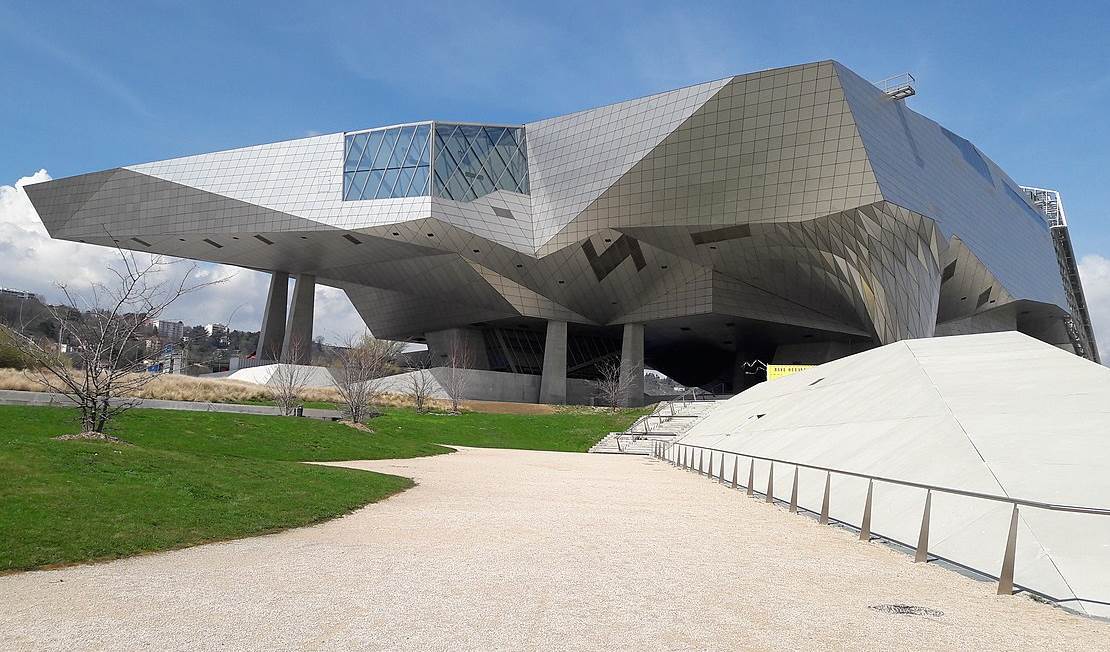
10. Museum of Pop Culture – Seattle, United States
The Museum of Pop Culture is yet another amazing building design by Frank Gehry. It’s located just northwest of downtown Seattle and was established in the year 2000. It’s a non-profit museum established by Microsoft co-founder Paul Allen which is dedicated to pop culture.
The museum is located on the eastern edge of Seattle Center, a large educational and entertainment center where you can also find the iconic Space Needle. The central Sky Church is dedicated to Jimi Hendrix and the rock band Nirvana and the overall design of the building resembles a smashed electric guitar.
